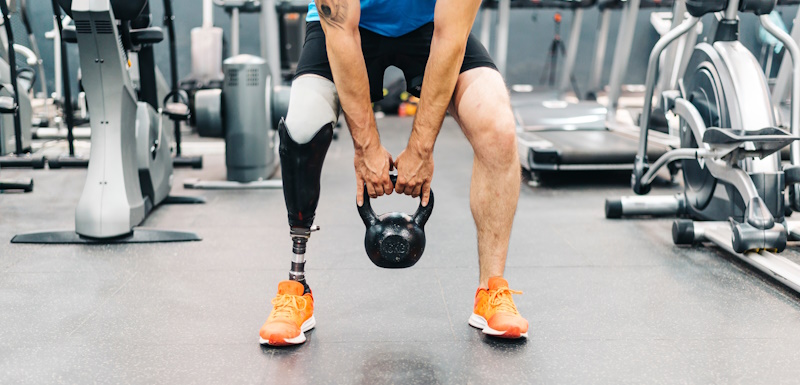How Prosthetic Limbs Enable People to Return to Normal Activities – Plus, Locating Orthotic and Prosthetic Resources in Kansas City
Undergoing an amputation surgery is a life-changing event that requires a significant mental and physical adjustment. Depending on your amputation site, you may need to relearn how to perform a myriad of tasks that used to be simple and easy, such as walking, navigating stairs, and driving a car.
Fortunately, prosthetic devices have improved the lives of individuals who have experienced limb loss or congenital limb differences. With advancements in technology and design, prosthetic limbs offer remarkable benefits, enabling individuals to reclaim their independence. Prosthetics are now so advanced that they are capable of helping people perform complex activities and motions.
Naturally, those who are new to using a prosthetic device have questions about how to choose a prosthesis, how much it will cost, and what its capabilities are. To provide some clarity on the matter, read this overview of what you can do with your prosthetic device. Afterwards, we will provide information about how to arrange a prosthetic exam and where to locate orthotic and prosthetic resources near you.
#1 – Prosthetic Devices Restore Mobility
Patients with above-knee or below-knee amputations are fitted for a prosthesis after they complete a prosthetic exam. Although learning to walk again is a process that takes several months of practice, mobility is perhaps the biggest benefit prosthetic devices grant to amputees.
The average below-the-knee prosthetic leg costs between $6,000 and $10,000, depending on many factors. This prosthesis will reliably restore a person’s ability to walk, sit, stand, and navigate stairs. Active individuals who are intent on running or require greater functionality should consider higher functioning models of prosthetic legs. These prosthetic devices can cost well over $50,000; however, they feature internal micro-processors and higher functioning components that facilitate more complex leg motions.
#2 – Prosthetic Devices Assist with Activities of Daily Living
The benefits of prosthetics extend far beyond mobility. Depending on whether the individual uses a leg or arm prosthesis, these devices support common daily activities, such as getting dressed, eating, operating a motor vehicle, exercising, and more.
Those who aspire to engage in activities that are more complex or advanced, prosthetics in Kansas City can be found that offer higher functioning capabilities. For example, hand prosthetic devices can support intricate tasks such as typing and playing musical instruments.
#3 – Get Back to Work by Using a Prosthetic Device
One of the huge challenges of undergoing amputation surgery is that it typically has an impact on the person’s livelihood. Post-surgery, there is a heavy emphasis on recovery, rehabilitation, physical therapy, and learning to use a prosthetic device. Some new amputees go on short-term disability so they can fully devote themselves to adapting to their new way of life.
After an individual has acclimated to using their prosthetic device with little to no assistance, they can usually return to work. Reentering the work environment may be slightly intimidating at first, but through therapy and constant practice, individuals will acclimate to being on the job again.
How a Prosthetic Exam and Fitting Works
After amputation surgery, the amputation site will change significantly in the first year. During the initial prosthetic exam, your prosthetist will take measurements of the residual limb, make a plaster mold, fit the silicone liner, and fashion the socket of the prosthetic device.
However, because the amputation site will shrink as it heals, patients must return to their prosthetist for adjustments when using their device becomes uncomfortable or causes skin issues. When the residual limb volume stabilizes, the need for adjustments should become far less frequent.
Locating Orthotic and Prosthetic Resources
Individuals who are scheduled to undergo planned amputation should reach out to their local prosthetist to schedule a consultation. It’s the best way to get all your questions answered about custom prosthetics.
During the initial appointment, your prosthetist will gather some of your medical background and discuss what to expect after amputation surgery, such as the prosthetic exam and subsequent fitting. They can also answer any questions you may have about the functional levels of prosthetic devices, and what out of pocket costs to expect after it’s been run through your insurance carrier.
Transitioning to a prosthetic limb is a significant adjustment, so be sure to ask your prosthetist for their advice on how to adapt, how to best care for your prosthesis, and any best practices they recommend for reengaging in certain activities.







